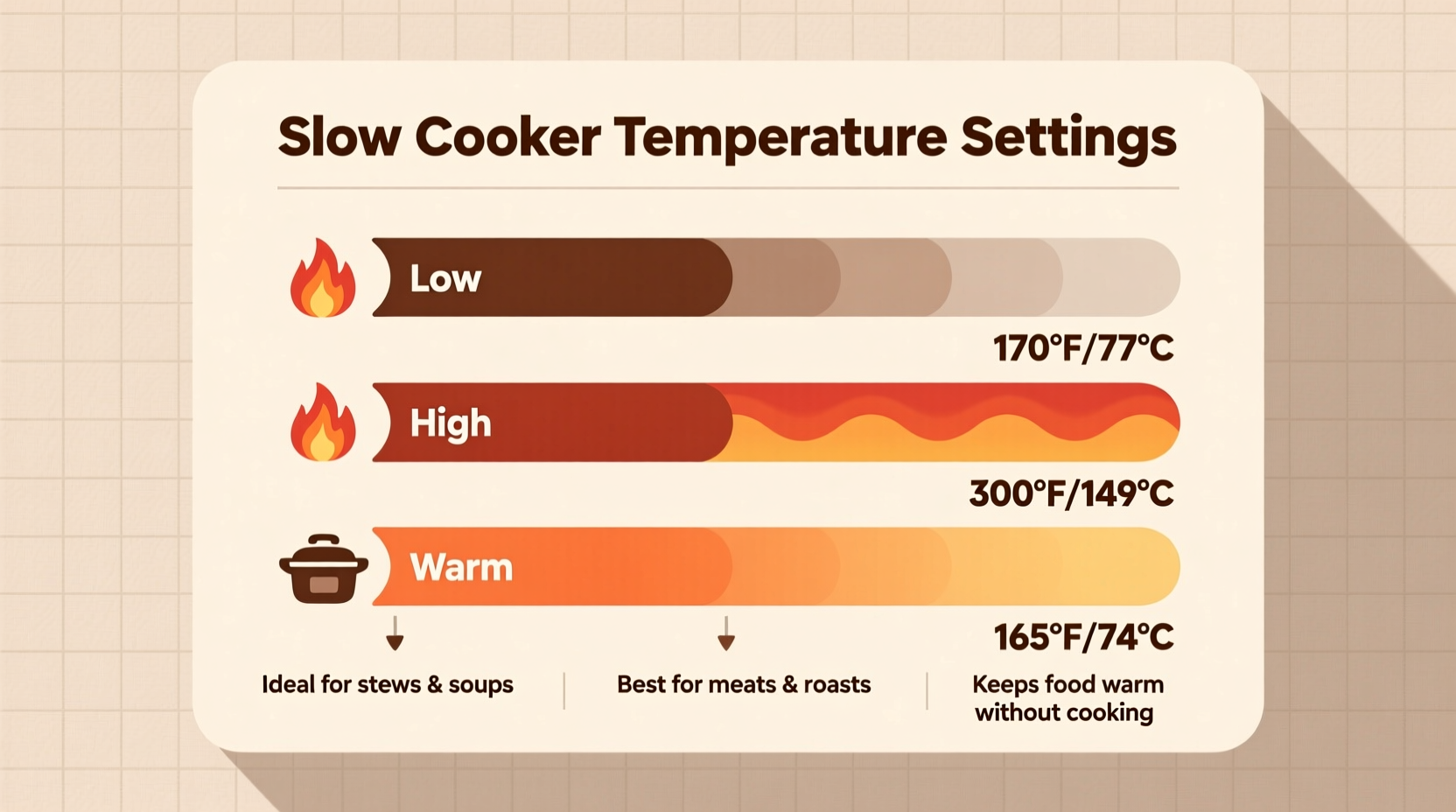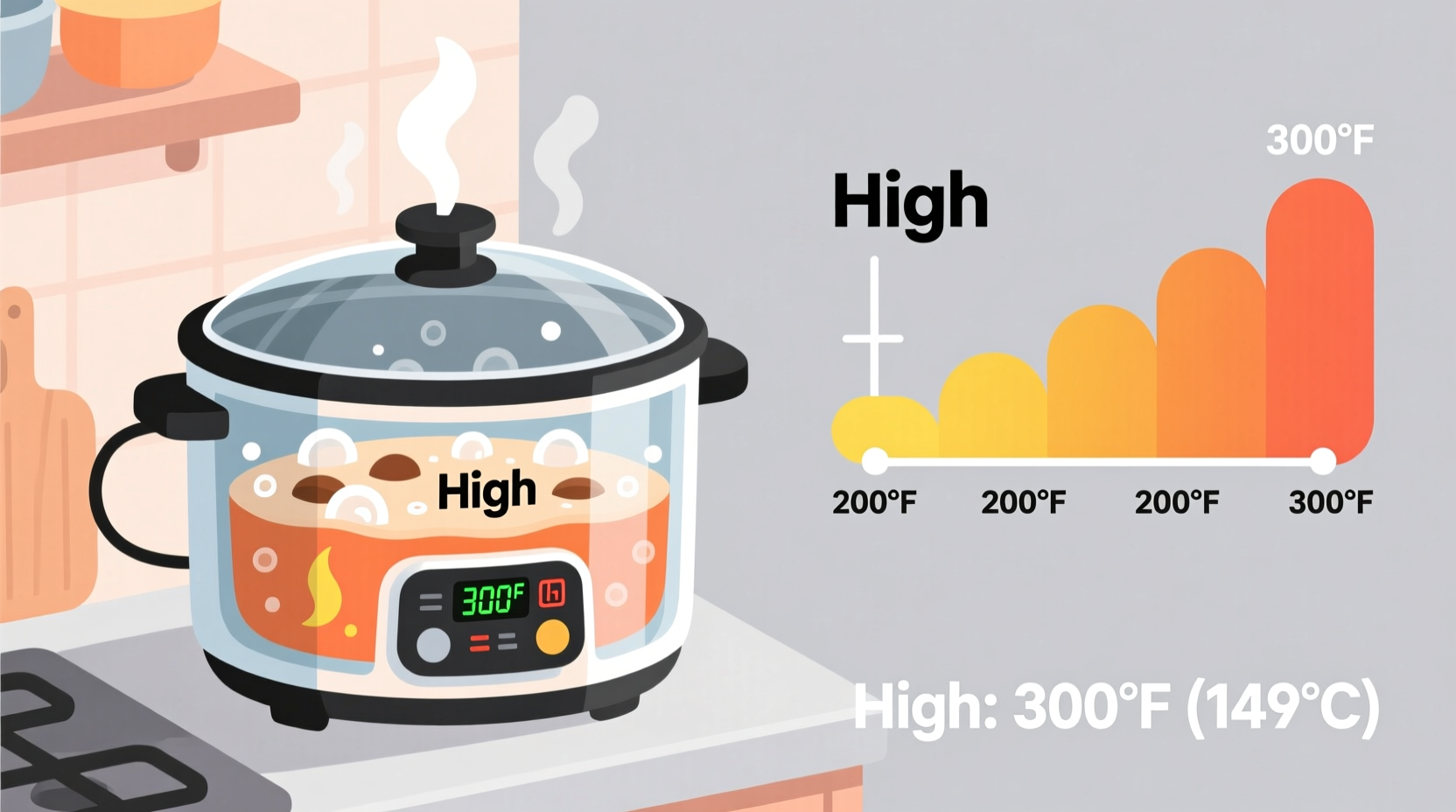Most slow cookers reach approximately 300°F (149°C) on the high setting, though actual temperatures can vary slightly between models. This precise temperature range ensures thorough cooking while maintaining food safety standards for extended cooking periods.
Understanding your slow cooker's temperature settings is essential for successful meal preparation and food safety. While the "high" setting might sound intense, it's actually designed for gentle, controlled cooking that transforms tough cuts of meat into tender dishes through low-and-slow heat application.
How Slow Cookers Actually Work
Unlike conventional ovens that rely on dry heat, slow cookers create a moist cooking environment through a combination of radiant heat from the ceramic insert and steam circulation. The "high" setting doesn't mean high temperature in absolute terms, but rather a faster rate of heating to the target temperature range.
| Slow Cooker Setting | Temperature Range | Equivalent Oven Temperature | Typical Cooking Time |
|---|---|---|---|
| High | 285-300°F (140-149°C) | 325°F (163°C) | 3-4 hours |
| Low | 190-200°F (88-93°C) | 225°F (107°C) | 7-8 hours |
| Warm | 165-175°F (74-79°C) | N/A | Up to 4 hours |
Food Safety Considerations for Slow Cooking
The USDA Food Safety and Inspection Service emphasizes that slow cookers must maintain temperatures above 140°F (60°C) to prevent bacterial growth during the cooking process. The high setting achieves this critical safety threshold within approximately 3-4 hours, making it suitable for recipes requiring shorter cooking times.
According to the USDA's Slow Cookers and Food Safety guidelines, properly functioning slow cookers reach temperatures high enough to kill harmful bacteria through prolonged cooking, even though the temperatures seem relatively low compared to conventional ovens.
When to Use High vs. Low Settings
The choice between high and low settings depends on both your schedule and the ingredients you're using:
- Use high setting when: You need to cook within 3-4 hours, working with leaner cuts of meat, or preparing bean-based dishes (which require thorough cooking to eliminate toxins)
- Use low setting when: You have 7-8 hours available, cooking tougher cuts with more connective tissue, or preparing delicate dishes that benefit from extremely gentle heat
Professional chefs note that the low setting often produces superior texture in meats, as the extended time at lower temperature allows collagen to break down more completely without risking overcooking.
Common Misconceptions About Slow Cooker Temperatures
Many home cooks mistakenly believe that the high setting cooks food "faster" in the same way that turning up a stove burner would. In reality, slow cookers operate within a specific temperature range regardless of setting. The high setting simply reaches the target temperature more quickly, but both settings ultimately maintain similar maximum temperatures.
Research from the National Center for Home Food Preservation confirms that most modern slow cookers maintain remarkably consistent temperatures across brands, with minimal variation between models when tested under controlled conditions.
Practical Tips for Optimal Slow Cooking Results
Follow these evidence-based recommendations for best results:
- Always fill your slow cooker between one-half and three-quarters full for optimal heat distribution
- Pre-brown meats before adding to enhance flavor development through the Maillard reaction
- Keep the lid on during cooking to maintain consistent temperature (each opening can drop the internal temperature by 20°F)
- For food safety, ensure frozen ingredients are fully thawed before cooking
- Use a food thermometer to verify internal temperatures of cooked meats meet safety standards

Troubleshooting Temperature Issues
If your slow cooker isn't reaching proper temperatures, consider these factors:
- Age of appliance: Older models may lose heating efficiency over time
- Power source: Ensure the cooker is plugged directly into a wall outlet, not a power strip
- Fill level: Too little or too much content affects heat distribution
- Altitude: At higher elevations, cooking times may need adjustment
To test your slow cooker's accuracy, fill it two-thirds with water, set to high, and measure the temperature after 8 hours using a reliable thermometer. Proper functioning units should register between 185-200°F (85-93°C) on low and 285-300°F (140-149°C) on high.











 浙公网安备
33010002000092号
浙公网安备
33010002000092号 浙B2-20120091-4
浙B2-20120091-4